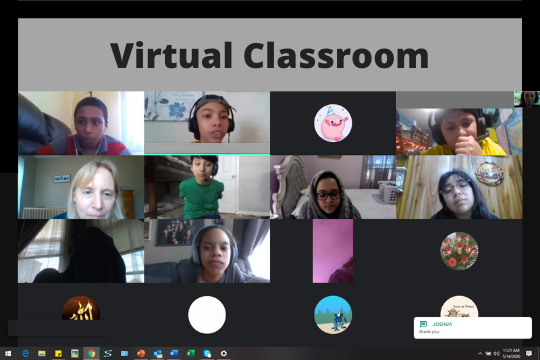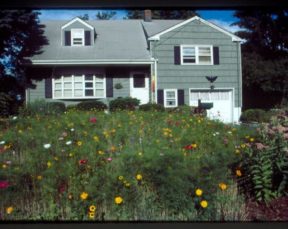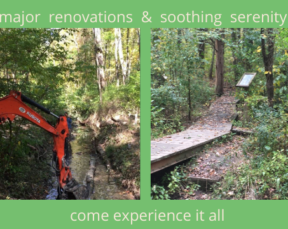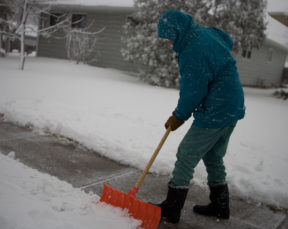By Val Thorpe – GSWA Director of Communications & Membership


Students popped up on the screen wearing anything from jeans to pajamas, but one thing was clear, they appeared eager to jump back into environmental education. And it’s hard to say who was more excited, the students or Hazel England, GSWA Director of Education and Outreach – Land Steward. “It felt amazing to be back to teaching and interacting with these young minds and they had a LOT of unique questions that I had never fielded before,” stated Hazel. “They were also thrilled to see a new face which doesn’t happen often these days!”
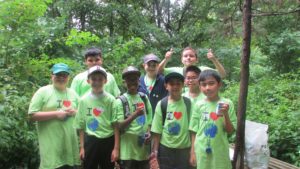 Many of these children had worked with Hazel outdoors or been out to our Conservation Management Area (CMA) in Harding Township for outdoor learning experiences through our education programs. On Tuesday, April 28, Hazel began GSWA’s new virtual environmental education program with nearly 60 middle school students in 3 30-minute back-to-back sessions. Through trial and error, she became more proficient in figuring out how best to deliver environmental education content virtually. Since that day, Hazel has conducted nearly a dozen 30-minute sessions, with several more scheduled over the next 6-7 weeks.
Many of these children had worked with Hazel outdoors or been out to our Conservation Management Area (CMA) in Harding Township for outdoor learning experiences through our education programs. On Tuesday, April 28, Hazel began GSWA’s new virtual environmental education program with nearly 60 middle school students in 3 30-minute back-to-back sessions. Through trial and error, she became more proficient in figuring out how best to deliver environmental education content virtually. Since that day, Hazel has conducted nearly a dozen 30-minute sessions, with several more scheduled over the next 6-7 weeks.
In the same fashion students have been schooled for the last several weeks, they joined by clicking a link on their computer that brought them into a virtual classroom managed by their teacher. To keep things orderly, students remained muted and the teacher served as moderator. Students had posted questions on the topic to a shared document prior to the start of the lesson. When questions arose, the children typed them in the comment section and the teacher, or a designated student posed them to Hazel. “It’s new technology for us all,” said Hazel, “so we were learning together what does and doesn’t work in real time with the students.”
What Hazel had not anticipated was the number of questions she would get relating to nature in a COVID-19 world. Following her typical lesson plan, she started on the topic of flowers and pollination – why do flowers look the way they do? What are the ecological reasons for the parts of the flowers and their fragrances? Which flowers attract what pollinators? She thought that together they would explore the details of the underlying scientific explanations but ended up fielding entirely new COVID-19-related questions from these curious students. Can COVID-19 be transmitted by pollen as it blows around in the wind? Can you get the Coronavirus in your back yard? And there were many thoughtful questions on what is happening in natural areas without people being present.
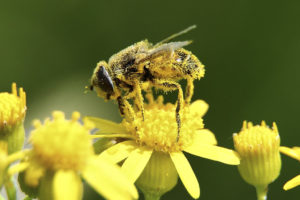

“It was eye-opening,” Hazel said. “I was not expecting to be a COVID-19 Q&A person. But it became clear that these questions were at the top of these students’ minds. So, addressing the epidemiology and transmissibility of the disease from a science-based perspective helped them to better understand real versus perceived risks. I had to break it down with them and walk through it hypothetically. ‘Imagine, even if you sneeze on a flower and you have the corona virus… yes, pollen grains are very small and fly through the air. We have learned that virus particles also move through the air, but pollen moves very differently than virus droplets, as the comparative size and behavior of the particles is different. After you sneeze, both UV light and time cause the virus to break down. Therefore, the risk of a grain of pollen being loaded with still potent virus and infecting someone is infinitesimally small.’”
While these are not the necessarily the same concepts Hazel would teach at an ecological field experience to the CMA, we are working in a new type of learning environment. It makes sense to begin with what the students are thinking about and work toward the content we want to convey by making it relatable to what they are observing or experiencing in this strange time. Another difference is the type of activities assigned to the students. For example, previously, they might have “adopted a tree” at their school to make and share quantitative and qualitative observations together throughout the year. Now, they have been assigned to select a plant in their own backyard or neighborhood to make their observations individually.
“We are finding that the best way to continue providing essential and relevant environmental education to our students is by remaining very flexible. We may have intended content we want to deliver during the lesson, but we must be able to follow where student inquiry leads us during these interactive sessions. It certainly keeps us on our toes,” said Hazel. “Sure, I’d rather be exploring concepts together in the woods during a field experience, but in my backyard, we can still engage in rigorous STEM (Science, Technology, Engineering, and Math) education with these students. They ask the questions, I answer them, and I’m getting as much out of this whole experience as the kids are.”
To promote stress relieving, safe, outdoor activity, we also developed some fun activities to be enjoyed by families, individuals, and students anywhere. They are open to everyone and we have had participants from across the country! We even learned that schools are using our materials to enrich their students’ daily experience and encourage them to get outside. Some of their submissions can be seen on GSWA’s social media platforms. These activities are free and our current challenge awards cash prizes in the form of e-gift cards, thanks to the generosity of our Board of Trustees.
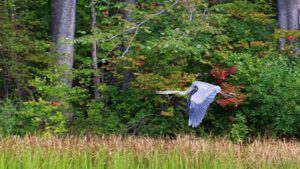

For the month of May, we rolled out our Spring “Quaran-green” Photo Challenge. Twice a week a new theme is announced, and the winner of each theme receives a $25 prize. The current theme is “Taking flight.” Participants may submit 3 photos per challenge thinking as creatively as they like. Winning photos are selected by the GSWA staff. This photo challenge runs through the end of May. Click HERE for rules and instructions.


Yet another new environmental educational opportunity available for students and individuals is our online, self-paced Stream Assessment Training program. Developed by Sandra LaVigne, GSWA Director of Water Quality Programming, this four-part series is intended for those who are curious about the health of their local streams and river. Session 1 explores the different aspects of streams in our area, different characteristics of a stream and why they are important, and how to draw a basic sketch of a stream. Sessions 2 & 3 discuss habitat parameters such as habitat cover, silt/sediment, streamflow, and storm pipe flow. And finally, Session 4 (coming soon) teaches how to measure current flow.
Keep checking GreatSwamp.org for more environmental education activities for you, your children, and your students. We are here for you!
